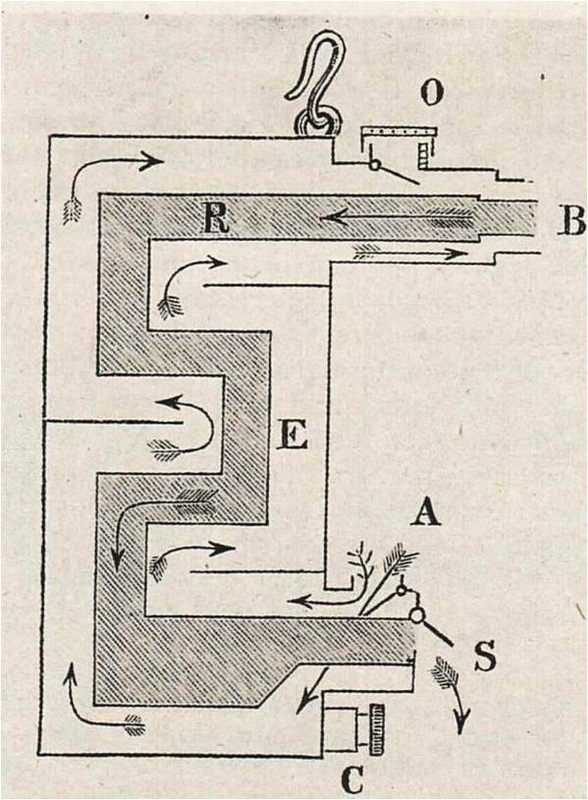Double current ether inhaler, 1873
"The opinions of medical men on the merits of ether and chloroform are so various, that I think I need not apologise for attempting to reconcile them."(1)
|
In the discussion that follows this statement, Clover outlines the advantages and disadvantages of each. Ether was generally accepted to be safer but was the side effects were seen as excessive by some "One surgeon reports eleven cases of vomiting out of twelve ether cases..."(1). He felt that the side effects of ether were due to administering high concentrations too quickly, something which could be avoided by using his chloroform apparatus. But, recognising that this was too bulky and inconvenient for many, he began developing a series of ether inhalers. This one was the first to be commercially produced
"The apparatus can be obtained of Messrs. Mayer and Meltzer, of Great Portland Street, or Messrs. Coxeter." The inhaler was essentially a metal box, 6x4 inches which could be hung around the administrators neck or stood on a table. Patients inhaled through one tube which passed over the ether, and exhaled through another convoluted tube which was enclosed within the first. The exhaled air therefore warmed the inhaler. Ether and water vapour in the exhaled air was trapped in an extension at the bottom of this tube and could be recycled - an early attempt at scavenging - "As, under ordinary circumstances, it would have been diffused throughout the room, it is a measure of the extent to which the odour of ether about the house is prevented." 1. Clover JT. Description of a new double current inhaler for administering ether. British Medical Journal. 1873;i:282-3. |
